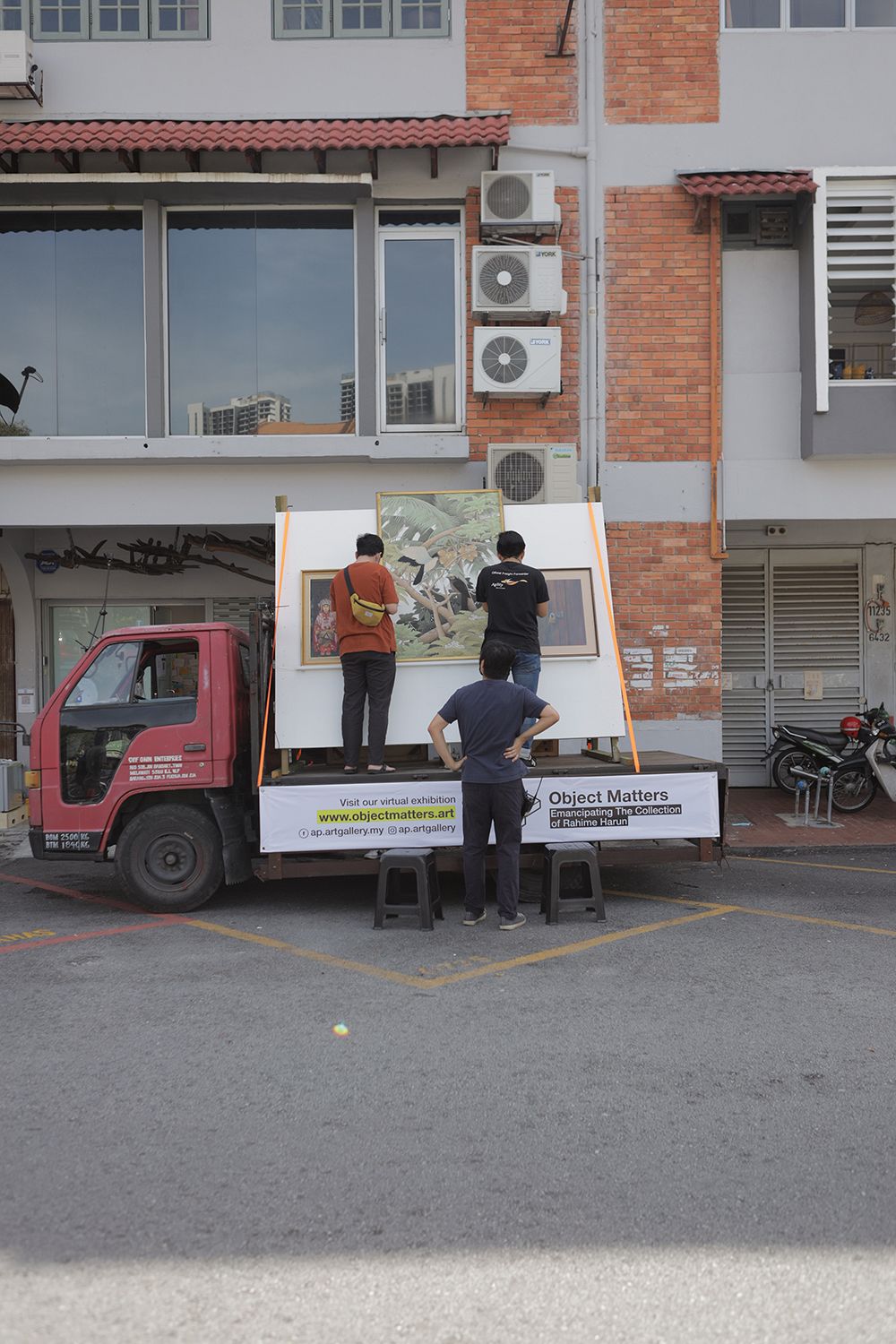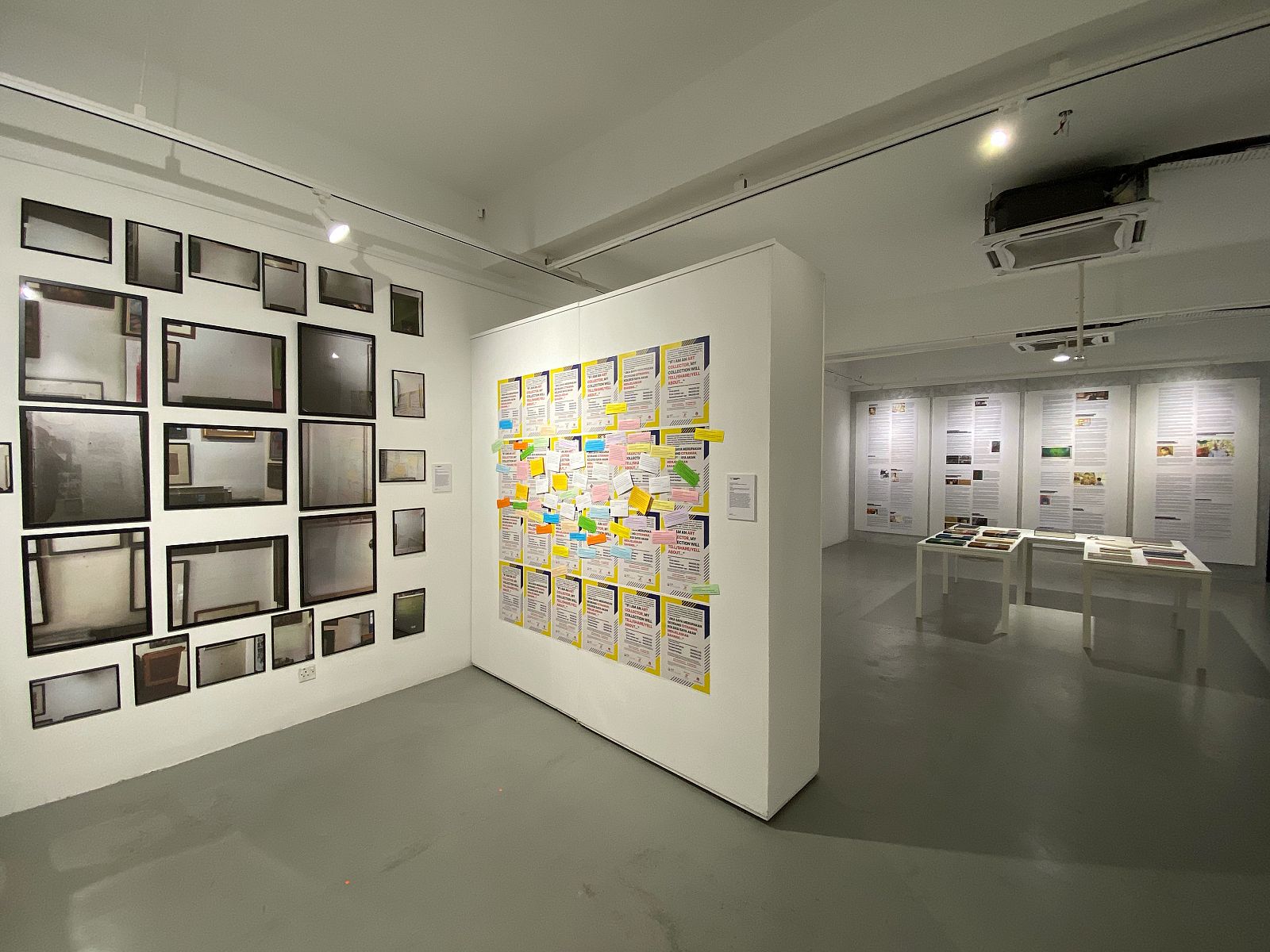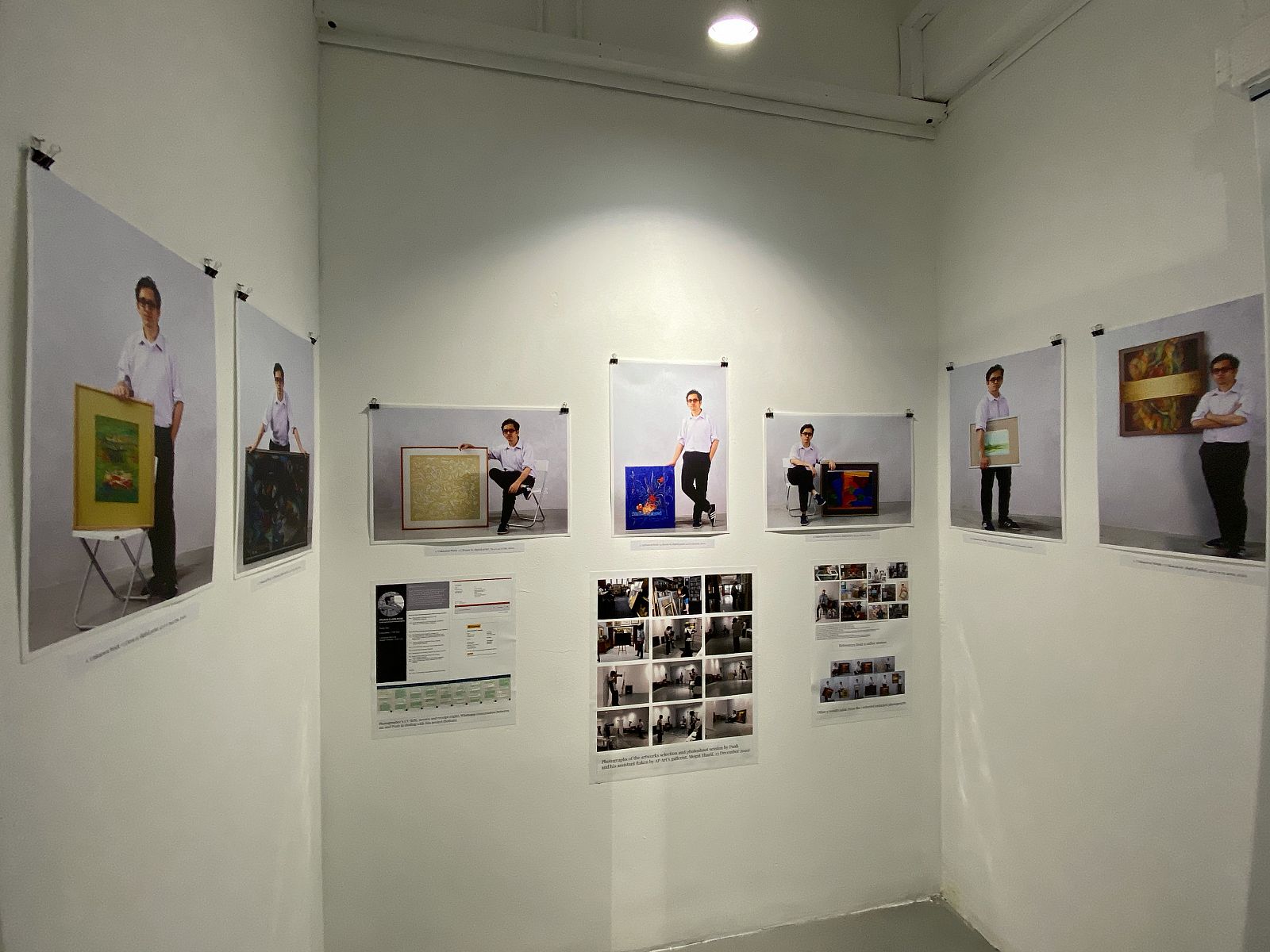When an art collector organizes a body of work based on certain aesthetic, conceptual, and structural factors, he bends the artworks to his will so that they speak on his terms. He filters out the dynamic narratives embedded within them to cohere with his personal narrative. The collection reflects his connoisseurship and taste, serving as a portal to his inner subjectivity, rather than the various moments, places, and persons to which the individual artwork attests. It is therefore imperative to free individual artworks from the framework imposed by a collector in order to fully appreciate the multifarious stories that they may impart to viewers. Yet, how do we decenter the collector as the focal point in discourse around his collection when the aforesaid collector is the late and extraordinary Rahime Harun—former director of Malaysia’s National Art Gallery and generous host to friends and strangers? The gravitational pull of his persona lingers even after his passing.
Object Matters: Emancipating the Collection of Rahime Harun, a curatorial project led by Roopesh Sitharan, is doubly ambitious in its attempts to inject new life into a collection burdened by traces of its collector and to amplify the autonomous voices of individual artworks within it. Object Matters culminated in a tripartite exhibition in January 2021 in an unassuming shophouse in Taman Melawati, a town on the northeastern fringe of Kuala Lumpur. The different floors of the building once served as Rahime’s gallery, workplace, and home. Today, Nazura Rahime, who resuscitated A. P. Art Gallery and inherited the art collection, naturally assumes the role of the host that her father had once played to countless guests.
The exhibition’s first component provides a survey of discourse on art collecting in Malaysia. Sitharan had intended it to be a forum where invited participants could probe his research. However, an unforeseen lockdown in January prevented a mass gathering in the gallery. Consequently, he transformed part of the gallery into a resource room instead. Catalogs of noteworthy private collections are laid out on tables in the center of the room. Blown-up images of news articles and academic journals discussing public perception of art collecting occupy two walls. Recordings of interviews old and new, featuring notable personalities from the art world, play on the remaining wall.
Sitharan’s extensive and layered presentation demonstrates that collecting decisions and changes in the art market reverberate across the art ecosystem. But the constant emphasis of contemporary art discourse on critical concepts and sociopolitical issues has encouraged artists to completely disengage themselves from the art market. The art world’s gatekeepers often demand absolute intellectual or creative autonomy from artists, which is neither feasible or possible. Any criticism or rejection of the art market becomes in itself a cultural currency that is capitalized by opportunistic individuals and collectors in the market. The outright dismissal of collectors and rejection of the art market can be more harmful than productive to artists whose livelihoods depend on the sale of their work, and yet these artists cannot resolve their ethical qualms with the system in which they must operate.
The second component of Object Matters, which unfolded in the collection storage and Rahime’s former study, constitutes a kind of confidence-building exercise intended to help the artworks and viewers speak louder and listen better. Rahime’s private home was charmingly cluttered with trinkets, seashells, ceramics, and books. Here, every inch of the wall is covered in artworks whose competing whispers liven up the apartment, beckoning the viewer over to them. In the collection storage, artworks haphazardly hang on walls and sit atop shelves, often without identifying labels. One might be tempted to identify the artist behind each work, which quickly proves futile and thus forces one to contend with encountering each work on its own terms.
The windows of the study look out over a drab parking lot, surrounded by newly built shops and offices, behind which taller buildings loom. The area, like many parts of the city, has changed drastically over the past few decades due to rampant development. In Rahime’s time, the view from the windows would have been a lush and green field. He was perfectly content with living in the shophouse. Rahime did not share the eagerness of his middle-class peers to move into landed houses in the suburbs, a testament to his eccentricity and affinity to his socially diverse neighborhood.
Nazura, who shares her father’s eccentricity, is in a unique position to reimagine the modus operandi of an art institution. In Malaysia, where institutions that foster art historical and contemporary art discourses are lacking, collectors significantly influence the direction and development of the local art world. Some collectors, such as Valentine Willie, Joshua Lim, and Dato’ Noor Azman, have adopted para-institutional roles or started para-institutions in order to compensate for the failure of the National Visual Arts Gallery to provide a critical space for artists, curators, researchers, and the public. But Nazura refuses to succumb to formulaic approaches. Unlike other first-generation collectors, she is more willing to explore new ways of caring for her collection beyond resorting to opening a private museum or donating to state institutions.
For the third component, three artists—Mark Teh, Amin Amir, and Nazrul Hamzah—created participatory works in response to the collection. Their pieces effectively decentered authorship and engaged in shared agency. For Melawati – This Place: Displays: Displace, Teh invited employees in the building to each select two works from the collection: a work they think should be exhibited to people in the neighborhood (which would later be paraded on a lorry in the area), and a work they would like to hang in their homes. As part of Melawati, photographs of empty spaces formed by the removal of artworks from the building’s walls were hung salon-style in the gallery. For If I Were an Art Collector, Amin invented a slogan-making competition and invited online participants to complete the sentence “If I were an art collector, my collection will tell/share/yell about…” He then formed a collage with competition posters and slogan submissions. For This is My Work, Nazrul selected paintings from the collection whose provenance was unknown and collaborated with a professional portrait photographer to photograph himself next to the unidentified works. The photographs were exhibited alongside materials that documented his process and negotiation with the photographer.
Along the way, each artist helped us to see the collection anew, though Amin and Nazrul were somewhat less successful than Teh in meeting the main objective of the curatorial project: to recuperate the autonomy of individual artworks. By asking the viewer or participant to prematurely foreground the purpose or narrative of a collection before considering the individual artworks that might be part of it, Amin inadvertently imposes the hypothetical collector’s narrative onto the collection, thereby subsuming the individual voice of each artwork under a unified framework. Nazrul draws our attention to artworks that resist the classification system of a collection, yet demonstrates how easily they could be co-opted into a unitary body of work and attributed to Nazrul himself. Even though both of these approaches attempted to help us see the collection differently, they ended up speaking for the artworks collectively and failed to enhance their individual voices.
Teh, on the other hand, breaks the collection’s narrative seal and draws out a multiplicity of viewpoints from within it. The individuals in the building each selected two works based on divergent motives and rationales. The resulting body of works cannot be said to cohere within a singular narrative flow easily. In turn, the narrative disjuncture that unfolded between each piece could force the viewer to slow down in the process of looking and compel them to confront each work on its own terms. That being said, the fleeting encounter between the viewer and work afforded by the installation’s transitory nature may hinder this.
If the primary target of Object Matters appears indeterminate and variegated, it is because Malaysian institutions, suffering from a lack of leadership and funding, fail to play a decisive role in shaping the local art world, as do many institutions in other parts of the Global South. Apart from the Young Contemporary Award—organized by the National Visual Arts Gallery and known colloquially as Bakat Muda Sezaman—whose stringent and arbitrary submission requirements were challenged by artists such as Yap Sau Bin and Roslisham Ise, institutional critique in Malaysia is not necessarily directed at state institutions.1Biljana Ciric (2012). Artists and Institutions: Institutions for the Future. Yishu: Journal of Contemporary Chinese Art, 11(5), 6-24. link Rather, it is often aimed at broader ideologies, such as the exclusionary logic of collecting, and individuals, such as collectors, who wield disproportionate influence in the art ecosystem.
Through weaving together fragmentary ideas and collaborative approaches, Object Matters: Emancipating the Collection of Rahime Harun speaks to the potential for curating to bring about an imaginative yet concretized mode of discursive production. Sitharan’s approach is akin to adhering indiscernible particles to a petri dish, causing them to stay put so that we may see them better. In Malaysia, where power structures are not clearly delineated and embodied in any one individual or institution, Object Matters traces the complex web of ideologies and actors that shape the art ecosystem by unravelling the art object’s hidden movements, narratives, and voices within a collection.
Eric Goh is a writer and curator from Kuala Lumpur. He is the founder of contemporary art space Mutual Aid Projects and a graduate student in art history at the Institute of Fine Arts, New York University. Prior to that, Goh was assistant curator at A+ Works of Art. His writing has appeared in Artforum, Plural, and O for Other.


